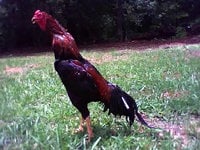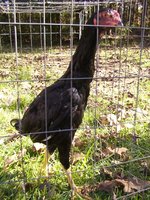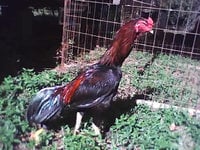General Information
- Breed Purpose
- Ornamental
- Comb
- Pea
- Broodiness
- Frequent
- Climate Tolerance
- Heat
- Egg Productivity
- Low
- Egg Size
- Medium
- Egg Color
- Light Brown
- Breed Temperament
- Friendly, tame, roosters likely to be very aggressive towards each other
- Breed Size
- Large Fowl
Shamo are a hard feathered game breed from Japan, said to have received their name from their country of origin Siam (Thailand) where they were imported about the seventeenth century. The breed was primarily used for naked heel cockfighting but there are other strains of Shamo used simply for exhibition purposes or meat fowl.
Many make the assumption that due to having arrived from Thailand previously, Shamo are just descendants of Thai gamefowl, but many Shamo breeders would disagree with this. It has been said that the ancestor to the Shamo were probably large Asil in which they do resemble more closely than a Thai.
The birds are to be very gentle with people, but cocks should never be permitted to be together after they are old enough to "game up"; this age may range from as early as 8 weeks up to 16 months for some of the large strains. Hens can also be very aggressive and may need to be kept separate from other hens, they should never be put with an immature male as they may end up killing him unless he can force her to submit to him. They have a very upright posture with prominent shoulders and a tail that is below horizontal. They have a very athletic build with powerful muscles throughout their body; due to the sparse, hard feathering it may require one to provide extra heating during the winter.
Birds also will need large roosts (preferably rounded) as adults to accomodate long legs and bodies and make sure the roost is not too high off the ground due to their heavy weight possibly damaging their legs (three foot is a good height). It is suggested not to provide young birds with roosts due to being slow growers and their keel being flexible for some time, if you provide a small roost it will cause their keel to become indented but with a large roost it should be fine.
The main two type of Shamo would be the Chu and O-Shamo, the only difference in these birds would be their weight. Chu Shamo weight ranges from 6.6 pounds up to 8.7 pounds. 8.8 pounds and above are classified as O-Shamo in cocks.
These are slow growing fowl, taking up to two years or more to be completely mature. As a result of that, one needs to not feed them too high of a protein content while growing. They can be fed regular chick starter up until about 8 weeks, but after that they need to have a feed with about 16% protein or less to stop them from going down on their legs because they grew too quickly for their bodies to handle it due to a high protein feed.
The hens can be very broody, but they make poor brooders due to being so large and clumsy with eggs. It is much easier to incubate Shamo than rely on hens hatching, especially hens with spurs as they tend to break eggs turning them more so than others.
They make excellent pets and are very easily tamed.
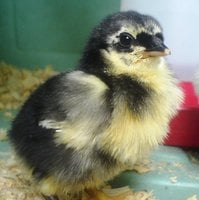
O Shamo chick
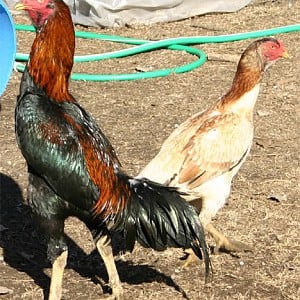
O Shamo pair


